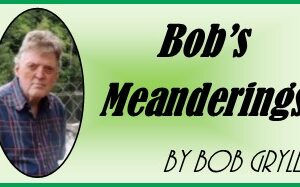All the world loves a clown, right? They smile, they play tricks, they just wanna make ya laugh! Then why do many of us find them so scary? To my sister from Belleville, they’re “Terrifying.” She has Coulrophobia – a persistent and irrational fear of clowns.
Representations of evil clowns in movies such as Stephen King ones, Jaws and Psycho are a big contributor to this phobia in the young and/or anxious-minded adults.
Clowns and court jesters have been around for thousands of years. Even Emperors and Kings allowed their court Jesters to mock them where no one else could. It was a pretty important position in court. The Clown or the Fool was also the ‘village idiot who was allowed to be blasphemous’ but harmless.
The best-known clown is a circus clown. This comic character of pantomime known by his distinctive makeup and costume, ludicrous antics, and buffoonery, whose purpose is to induce hearty laughter. They heal, they scare, they mock, they amuse. White faces; red noses; painted smiles absurdly exaggerated; wee little hats with a daisy sticking up; braces barely bolstering puffy pants, they tumble from tiny cars and trip over their outsized shoes. They know every trick in the book and they live for a roar of laughter from the crowd.
What a strange paradox. We’re not afraid of monsters and creatures designed to be scary, but clowns that are meant to be colorful and cheerful are seen as uncanny and distrustful. But it wasn’t always like this.
I clearly remember my favourite Halloween night as a kid. I went trick or treating dressed as a clown. My outfit was so disguised that no one, not a friend or a neighbour where I stopped for treats, recognized me. I never told anyone about my experience. That sense of invisibility and freedom to maneuver make it surreal. I do have one strong lingering fantasy: Enter a packed auditorium as a clown, raising my arms and my voice and shouting, “The show is cancelled. Everyone go home.” At the same time hold onto the dichotomy of innocence, the child within us that never grows up, as well as the wisdom see through the charade.
Clowns are differentiated by the type of costume, make-up and performance. There is the whiteface clown, the grotesque clown, the character clown (a specific common character), and the Auguste (circus) clown.
Charli Chaplin was to say, “I remain just one thing, and one thing only – and that is a clown. It places me on a far higher plane than any politician.”
The archetypal clown has three major characteristics: making people laugh, making them cry, and wearing a mask that covers the clown’s own real emotions.
Psychologically speaking, the clown also has a dark side which finds expression in cruel mockery or betrayal. This shadowy clown distressed by an unconscious lack of power is often driven by an excessive desire for fame. This dark aspect can sometimes inspire a phobia of them, mostly due to the heavy make-up that completely conceals the wearer’s identity.
Performing clowns, however, portray the good in this archetype mostly honourable with pure intentions and a firm grasp on integrity.
Even though clowns do nothing wrong but are just trying to entertain us, we’re instantly intimidated and feel uncomfortable at the mere sight of them, an irrational fear but a fear just the same. At some point people just decided to view and depict clowns as monsters and little else.
Many things have contributed to the image of clowns being scary. One was the serial killer John Wayne Gacy, a registered clown by the name of Pogo. He was nicknamed the “Killer Clown” though he didn’t commit his crimes while wearing his clown costume. He embraced the nickname, and while in prison he painted many pictures of clowns. Gacy famously said, “You know…clowns can get away with murder.”
And so, if you are looking for a reason to become festive this August (clown month), why not let your inner clown come out to play? Heaven knows, we take life so seriously. In honour of the ancient tradition of fools everywhere, let’s clown around a little – I know I will.





![Kenopic/Smith Auction [Paid Ad]](https://whitewaternews.ca/wp-content/uploads/2018/10/advertising-100x75.jpeg)

